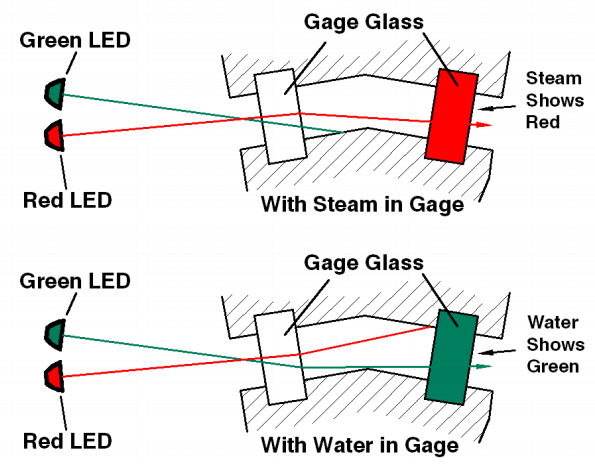Water shows GREEN Steam shows RED.
(Light refracts differently through water than steam
with glasses on specific angles)

Water shows GREEN Steam shows RED.
(Light refracts differently through water than steam
with glasses on specific angles)

When in operation, bicolor level gauge shows to the observer port holes lighted green in the water zone and port holes lighted red in the steam zone. In case of long glass gauge, the window appears part green and part red. This result is obtained exploiting the following optical principle: different colors (in this case: red and green) have a different index of refraction when passing obliquely through different media (in this case: glass, water and steam).
For the purpose, the gauge body has a trapezoid section with glasses placed on the non parallel faces. An illuminator with special red and a green filters is fitted on the gauge at the opposite side with respect to the observer. This special illuminator conveys light through the filters obliquely to the back glasses of the level gauge.
Said filters allow crossing only to red and green rays. Such colored rays reach, through the back glass, the media inside level body. When the gauge contains steam, green rays are considerably deviated and prevented from emerging by the observer side; then only red light, whose rays are smoothly deviated by steam, passes through the whole internal hole, reaching the observer. Conversely when rays find water, red rays are considerably deviated and lost inside the internal part of level gauge, green rays can reach the front glass and seen by the observer.